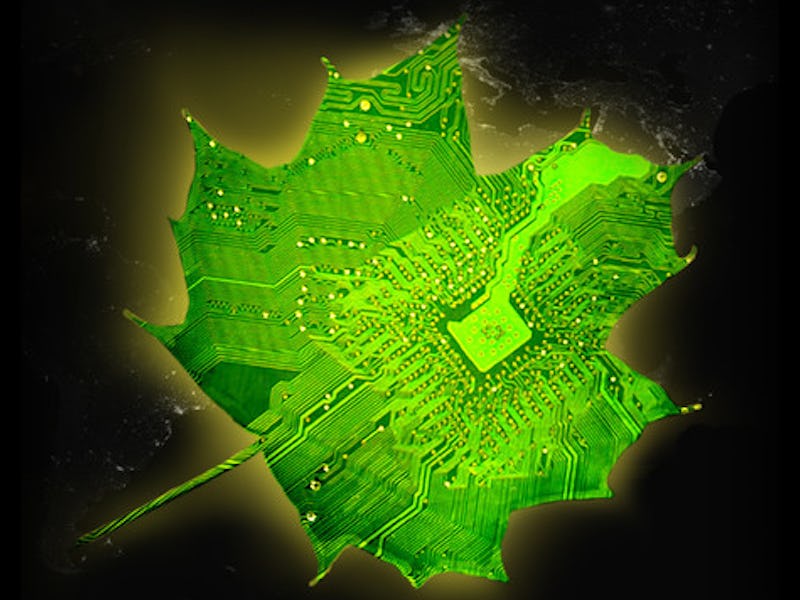New System Turns Carbon Dioxide into Fuel Even Better than Plants
Artificial photosynthesis -- once the stuff of science fiction -- may be the future of energy

Sorry plants, but you just got shown up.
Scientists at Lawrence Berkeley National Laboratory have discovered how to harness solar power to turn carbon dioxide into fuel. That’s exactly what plants do every day with photosynthesis, but this newly discovered process does the job even better than nature does.
“It is possible to take sunlight, CO2, and water, and in an artificial system make hydrocarbons with an efficiency that’s greater than that of photosynthesis,” Joel Ager, lead author of the study, tells Inverse. Hydrocarbons are just any molecules made of hydrogen and carbon, and their ability to store energy has made them the main energy source for the planet.
If the system can break out of the lab, it could help fuel the world without relying on high-polluting and globally warming fossil fuels like oil and gas. And there’s plenty of sunlight, water, and carbon dioxide around — indeed, far more of the latter these days than there should be.
As the researchers detail Wednesday in the journal Energy and Environmental Science, the researchers used a photovoltaic solar cell to split carbon dioxide in water, producing the desired hydrocarbon fuel molecules like ethanol, as well as oxygen-based molecules.
This is the first time scientists have managed to go straight from carbon dioxide to a finished, basically ready-to-use fuel, without having to do any more costly chemical manipulation. Improvements in the solar cell technology powering the experiment also let the researchers convert the energy at levels plants could only imagine.
A drawing of how the solar-powered fuel system works to convert C02 using a solar-powered cell.
While this kind of technology could revolutionize the way energy is produced in the future, Ager is the first to say that wide-scale use of this system is a long ways off.
“There’s a number [of challenges],” Ager says. “In order to operate this type of system we’d need a concentrated source of carbon dioxide.”
Though there are research efforts working on this, the science is not quite established yet.
“Another challenge we see now is tuning the distribution of the products in a way that they can be easily separated,” he adds. “Right now the ethanol created is dissolved in water.”
One thing that’s especially impressive about the setup is that it can function throughout the day rather than just during peak sunlight.
Japanese artist Akihisa Hirata created a thematically-similar installation called "Photosynthesis' in 2012 that aimed to show "a reflection on the natural relationship that exists in a tree between its leaves, fruits, and flowers, a truly interdependent cyclical ecosystem in miniature."
Other things that need to be tested include the long-term reliability of the system. But, if these hurdles are met, the results could be revolutionary.
“If processes similar to the one we’re using in our laboratory could be scaled up, this would provide a source of hydrocarbons for use as fuels that could replace what we use now, the so-called fossil fuels that we mine from the ground,” he says.
If you liked this article, check out this video of a man-made island that could power millions of Europeans with clean energy.